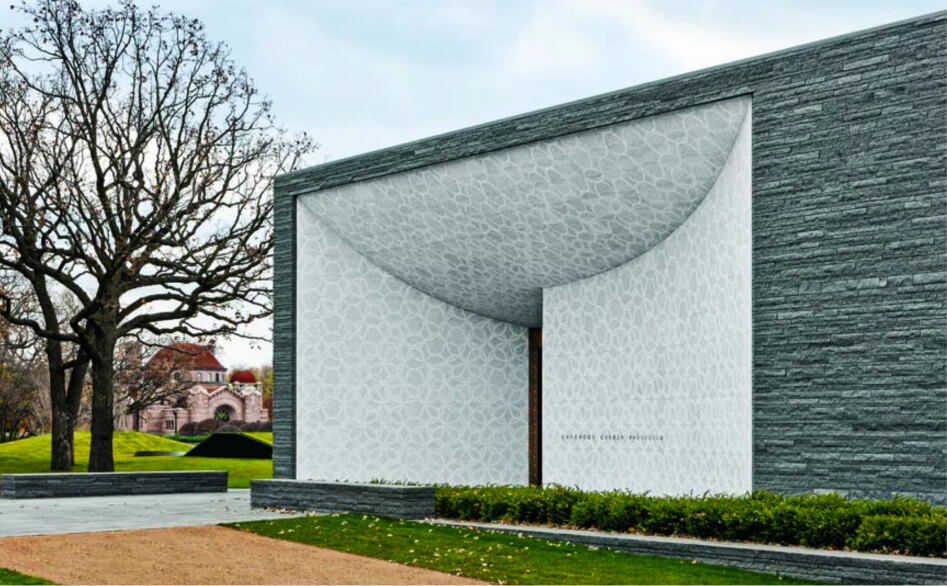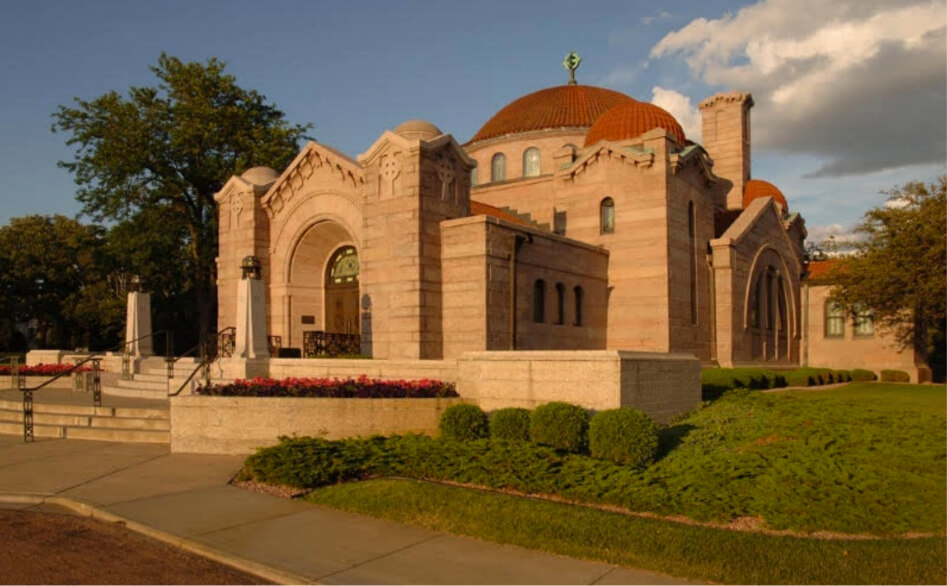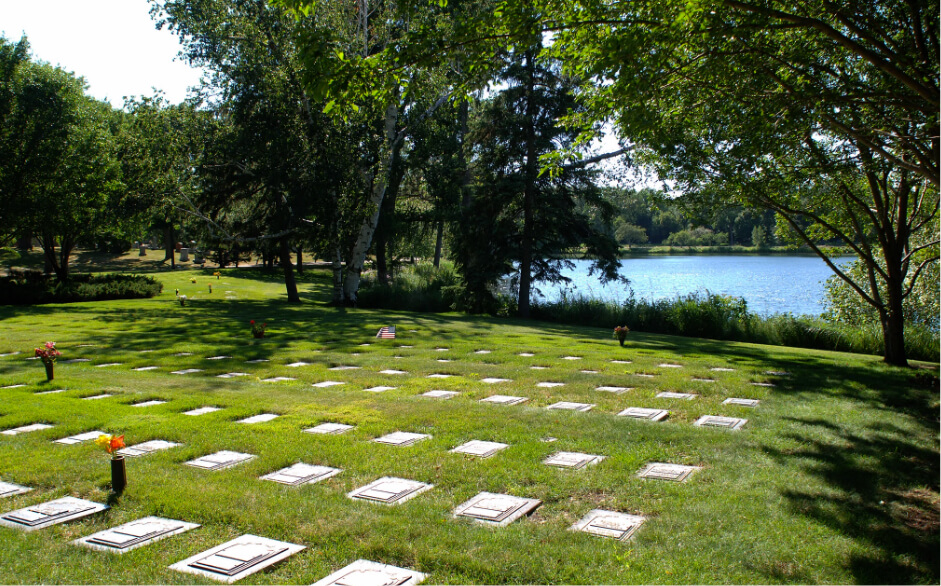
Cemetery Art & Symbolism
Lakewood was founded in 1871 at the height of cemetery art in America. As decades have passed and hundreds of monuments and sculptures have been erected, Lakewood has become an outdoor museum presenting diverse religious and cultural symbolism reflecting both our local community and the times.
Popular Styles
Between 1850 and 1930, many prominent architects and sculptors designed funeral monuments. Three primary styles were popular during this period: Classical Revival (a woman draped in flowing Grecian robes is typical) Egyptian Revival (the pyramid and obelisk) and Medieval Revival (hefty, round Romanesque lines or delicate detailed Gothic style). Another popular motif featured “natural” images that copied the rugged look of rocks and trees. Monuments often imitated the look of a large, uncarved boulder to achieve this style.
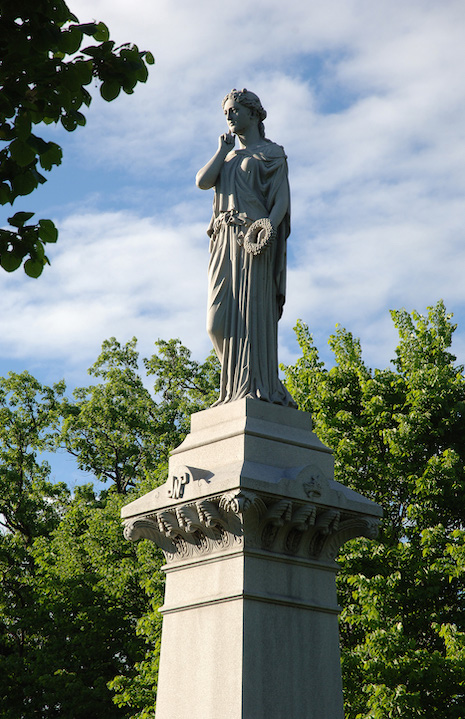
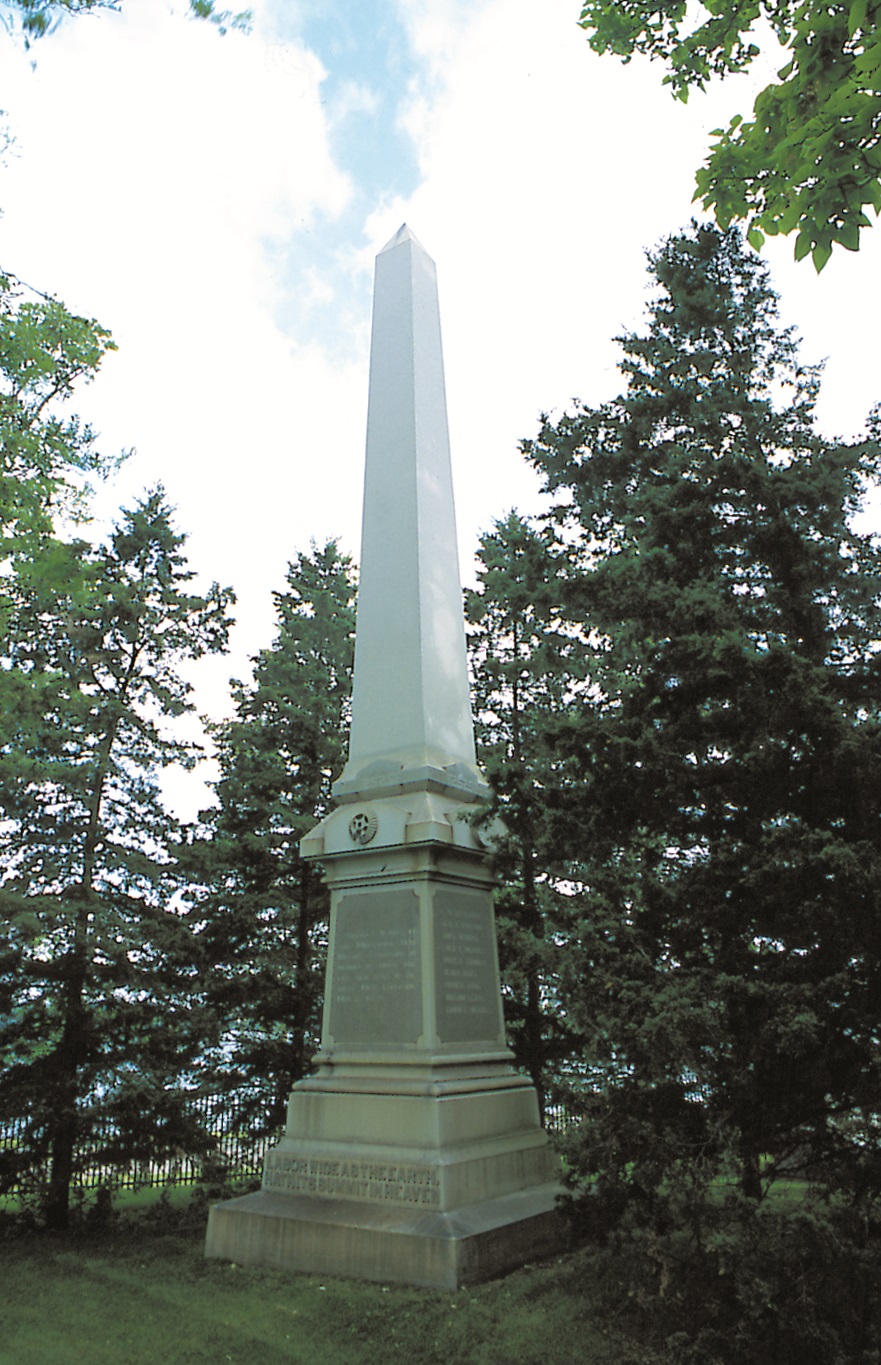
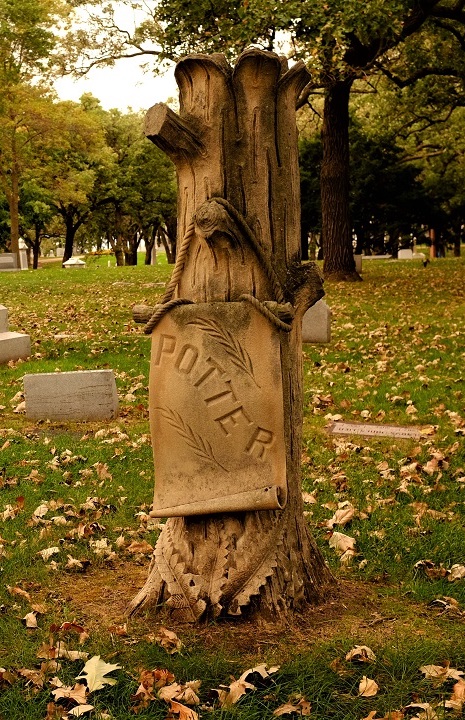
Memorial Symbolism
Memorial art popular during the Victorian era (and prominent at Lakewood) used a language of symbols to speak to visitors about the culture, values and identity of the monument’s patron. Because of changes in memorial ritual and style over the years, some of the meanings behind symbols are no longer commonly known today.
Common Symbols
- Urn — The urn is a traditional symbol of death because of its ancient use for holding ashes. The urn is also a symbol for a house or dwelling. When the urn is draped, it means a “house of mourning.” The design mimics the funeral urn of the ancients.
- Harp — A symbol of hope, joy, and music. It is the symbol of St. Cecilia, the patron saint of musicians, and is often associated with worship in heaven.
- Drapery (also called pall) — A symbol for sorrow, grief, and mourning. Some believe that draping represents the collapse of the partition between life and death, while others believe it represents the shroud left after the soul departs the body. Drapes are seen in conjunction with a number of symbols, most commonly with the urn, harp or cross.
- Obelisk — Obelisks were a feature of the Egyptian Revival architectural style which reached its peak during the late 1800s. As the style was adapted by Victorian-era Christians, the obelisk came to represent rebirth and a connection between earth and heaven.
- Celtic Cross — The Celtic cross is strongly tied to Mother Nature as well as Irish and/or Scottish heritage. The four arms of the cross represent the four elements of water, fire, earth and air. The endless inter-laid patterns in the cross are called Celtic knots and have meaning that ranges from the mystery of life and death to immortality.
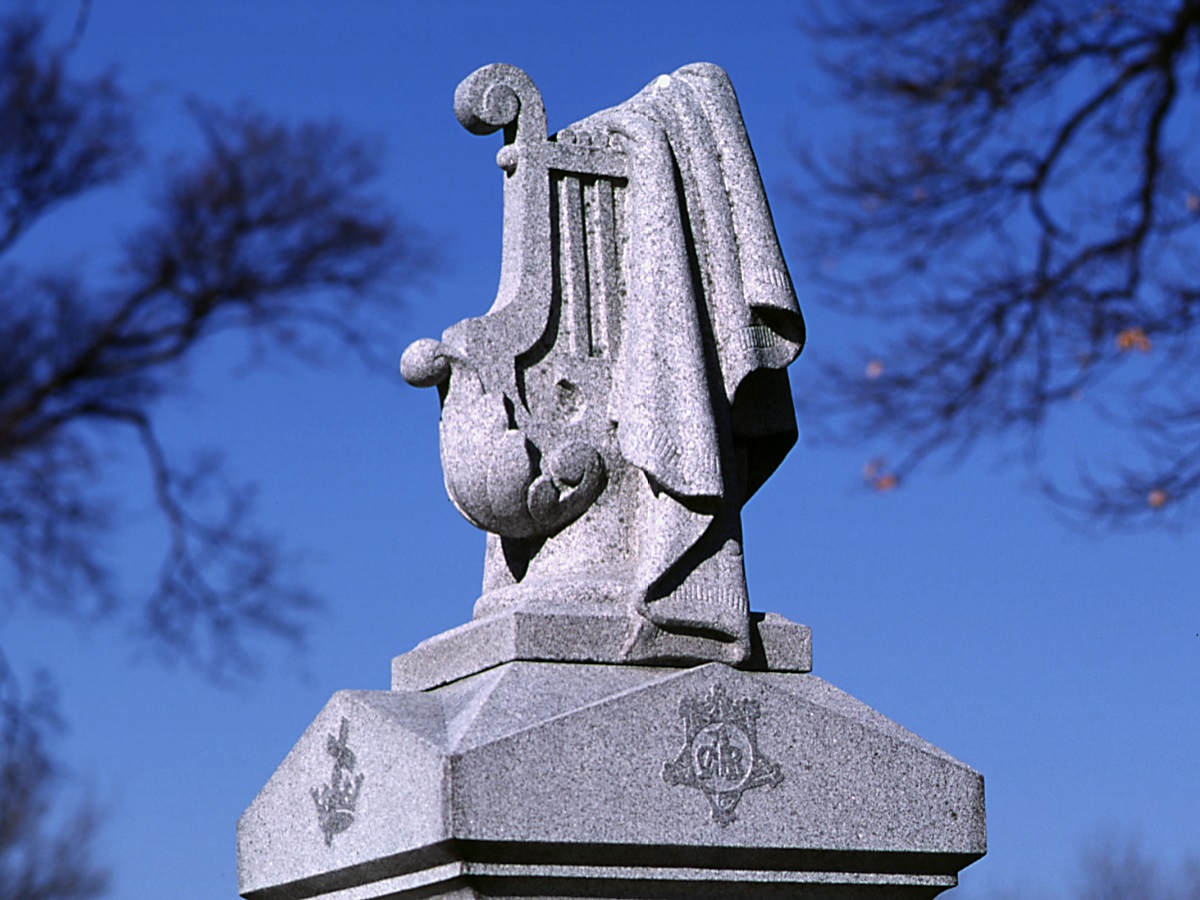
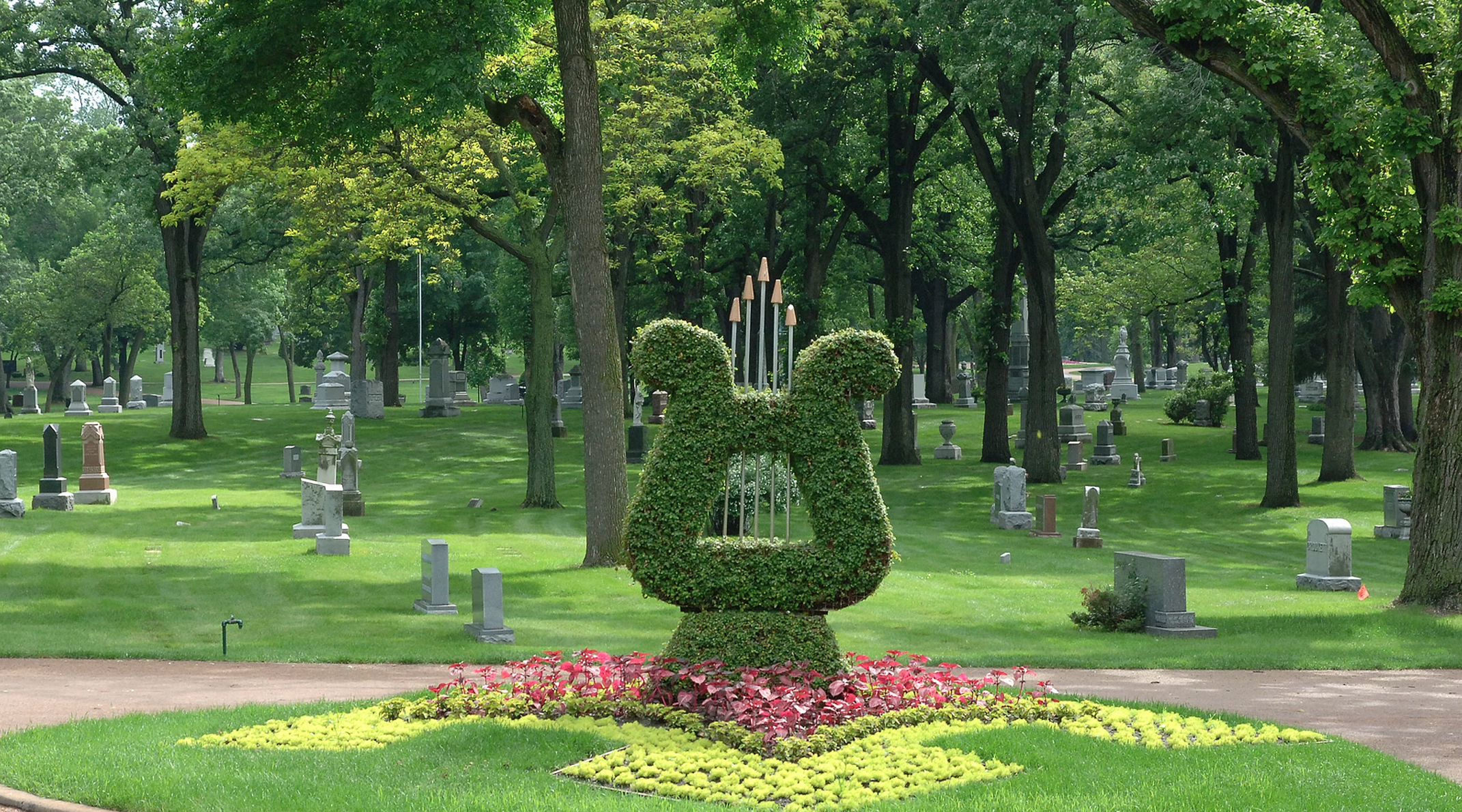
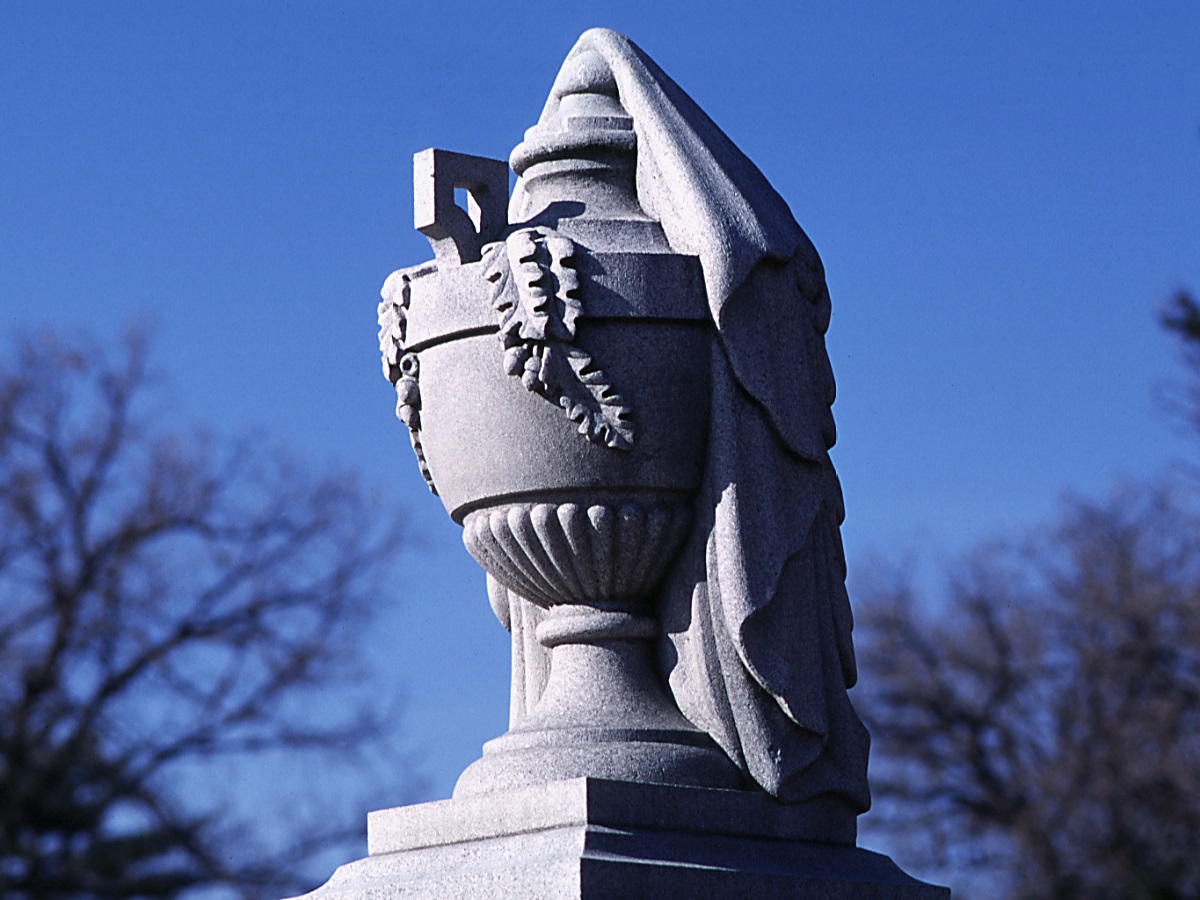
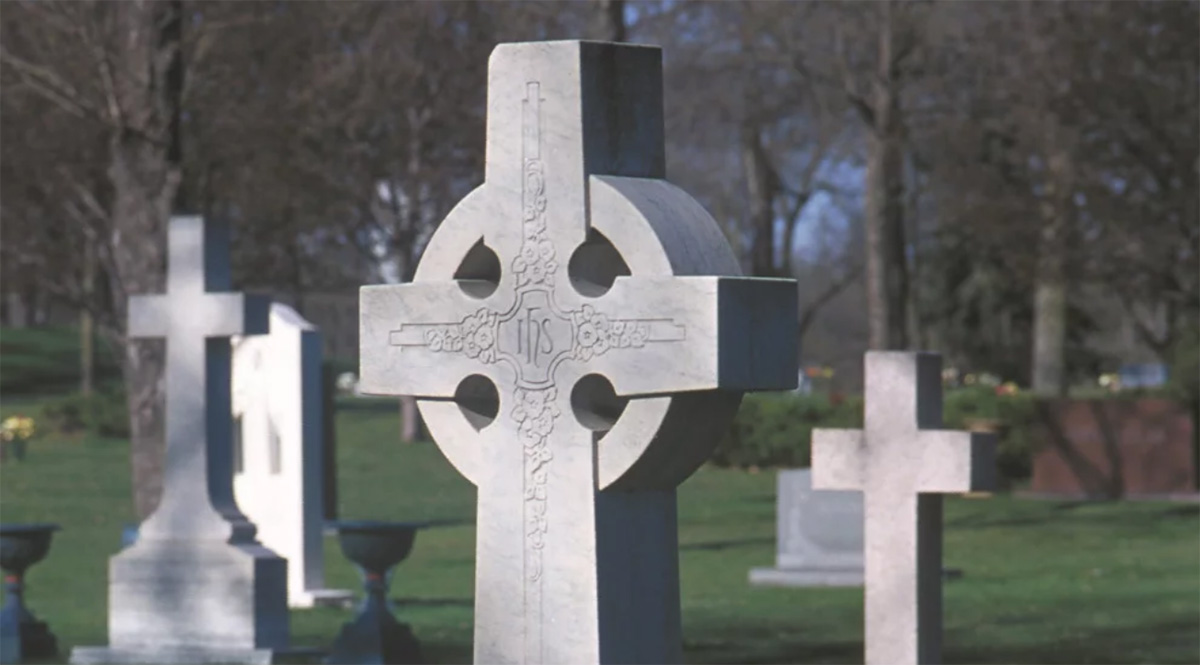
One-of-a-Kind Monuments
Some cemetery sculptures portray the people whose graves they adorn, as exemplified by sculptures of children at Lakewood. Other sculptures were created to honor specific groups or cultures, such as a life-size bronze elk statue dedicated to the Brotherhood of Paternal Order of Elks and the pagoda-style Chinese Community Memorial. You’ll also find modern sculpture at Lakewood, including Gloria Tew’s stainless steel monument erected in 1996 for Minnesota Governor Rudy Perpich.
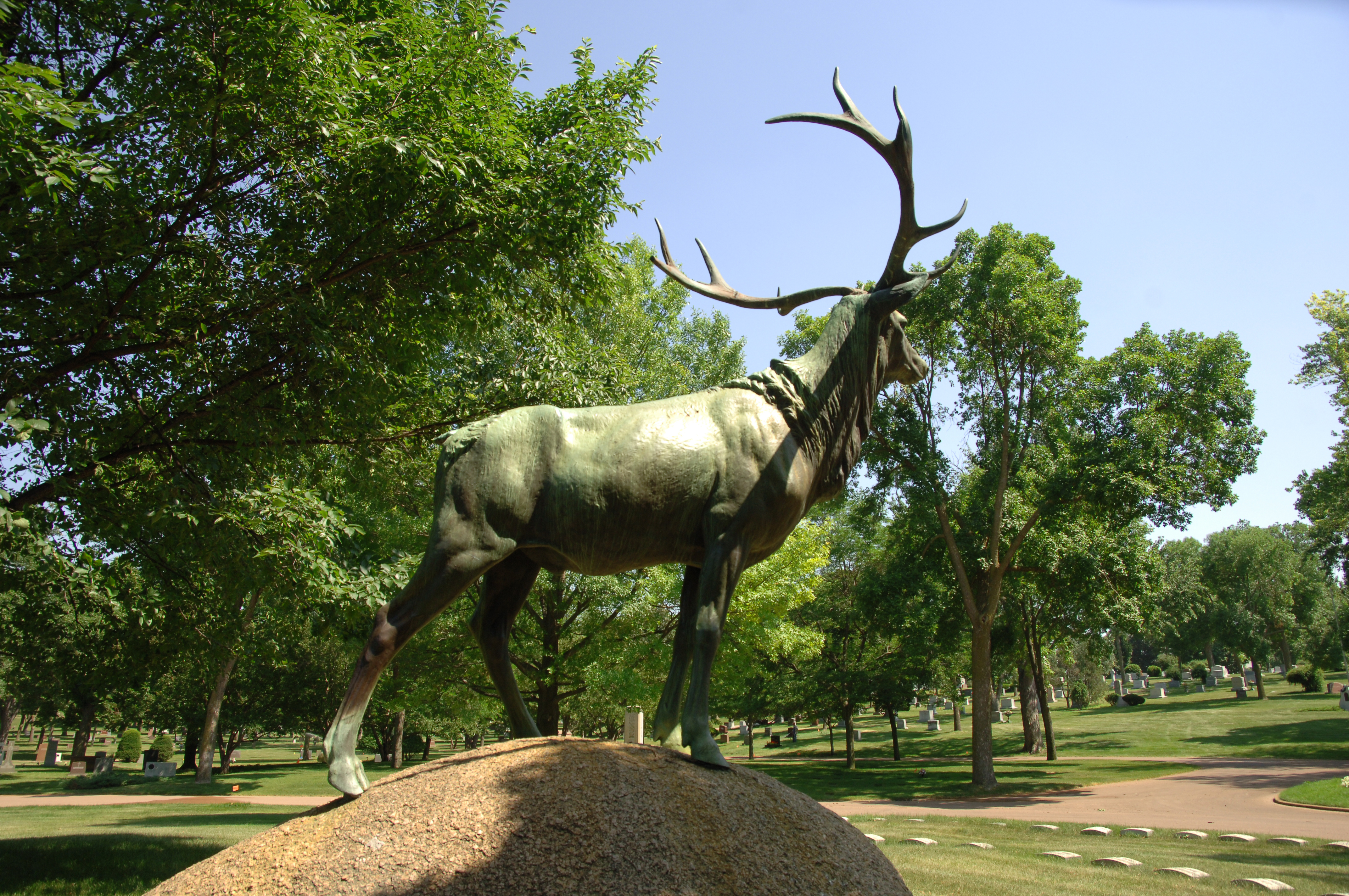
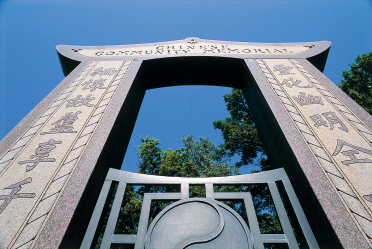
Learn more about our famous memorials.
For more about symbolism, take a self-guided walking tour.
Do you value history, beauty and nature?
The Lakewood Heritage Foundation is a nonprofit 501(c)(3) organization that funds the preservation and restoration of our landscape, art, architecture and public spaces, and helps make our educational programming more accessible.
We welcome donations from anyone interested in maintaining this precious place—for the benefit of all.
